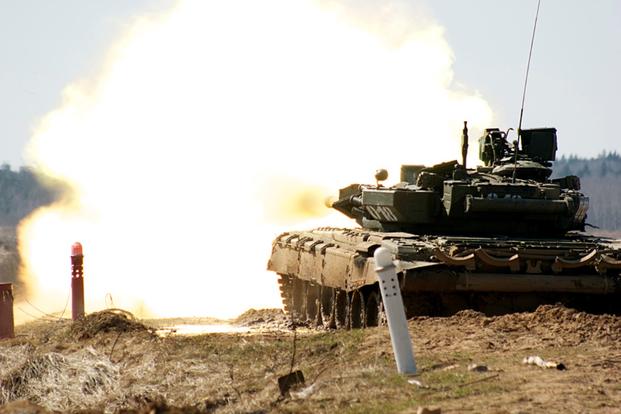A handful of foreign tanks -- including Russia's -- now match the power of the U.S. Army's main battle tank, the M1 Abrams, an American general recently testified to Congress.
"I think for the very near term, the Abrams is still near the very top of its class," said Lt. Gen. John M. Murray, deputy chief of staff for financial management, referring to the third-generation tank built by General Dynamics Corp. that entered service in 1980.
"I think we have parity," he said during a March 22 hearing of the Senate Armed Services Committee's Airland Subcommittee. "I think there is parity out there. I don't think we have overmatch."
Murray's comments came in response to a question from Sen. Dan Sullivan, a Republican from Alaska and a Marine who served in Afghanistan. He later elaborated on the topic in response to a question from Sen. Tom Cotton, a Republican from Arkansas and chairman of the subcommittee, who asked what foreign tanks are competitive with the Abrams.
"I would say that the Israelis' -- the Merkava -- would be one," Murray said. "The [Russian] T-90 is probably pretty close. People talk about their Armata tank and that's still, in my mind, not completely fielded. Probably the British tank [Challenger 2] is pretty close. I would not say that we have the world-class tank that we had for many, many years. I'll be an optimist and say that we're at parity with a lot of different nations."
Here's a closer look at the foreign tanks he mentioned:
Israel's Merkava MK-IV
 Israel's Merkava MK-IV (Mark 4) (Israel Defense Forces photo)
Israel's Merkava MK-IV (Mark 4) (Israel Defense Forces photo)
Israel Defense Forces' Merkava first entered service in 1978, though the newest model, the MK-IV (Mark 4), entered production in 2004. The 65-ton tank was developed by Mantak and the IDF Ordnance Corp., and carries four crew members. It features a top speed of 40 miles per hour, a range of about 310 miles, a 120mm smoothbore gun. The IDF is moving forward with plans to add to the vehicle the Trophy Active Protection System, which is capable of destroying anti-tank missiles.
Russia's T-90A
 Russia's T-90A tank (Russian Defense Ministry image)
Russia's T-90A tank (Russian Defense Ministry image)
Russia's T-90 is a third-generation tank that entered service in 1993, though an upgraded variant, the T-90A, became operational in 2004. The 46-ton tank is made by Ural Design Bureau of Transport Machine-Building (Uralvagonzavod), carries three crew members, and features a top speed of 37 miles per hour, a range of about 340 miles, a 125mm smoothbore gun, as well as an active-protection system.
Russia's T-14 Armata
 Russia is developing the T-14 Armata next-generation tank to succeed the T-50. (Russian Defense Ministry image)
Russia is developing the T-14 Armata next-generation tank to succeed the T-50. (Russian Defense Ministry image)
Russia has reportedly stopped buying the T-90 to develop and field the next-generation T-14 Armata tank, which is believed to still be in testing and not yet operational (see Murray's comments above). The 50-ton tank being developed by Uralvagonzavod is designed to carry a crew of three and feature a top speed of as much as 56 miles per hour, a range of about 310 miles, a 125mm smoothbore gun and an active-protection system.
Britain's Challenger 2
 Britain's Challenger 2 tank (U.K. Ministry of Defense photo)
Britain's Challenger 2 tank (U.K. Ministry of Defense photo)
The United Kingdom's FV4034 Challenger 2, made by the British defense giant BAE Systems Plc, entered service in 1998 to replace the Cold War-era Challenger 1. The upgraded variant weighs about 63 tons and carries a crew of four, including a commander, gunner, loader and driver. It features a top speed of 37 miles per hour, a range of 340 miles and a 120mm rifled gun.
Meanwhile, the latest variant of the U.S.-made Abrams, the M1A2, weighs about 72 tons, carries a crew of four, and features a top speed of 42 miles per hour, a range of 243 miles, and a 120mm smoothbore gun. The Army for years has talked about adding active protection to the tracked vehicle, but hasn't yet.
Murray said the Army is "just about reaching the limits of what we can do with the Abrams, so it is time for us to start looking at a next-generation tank." But, he added, "There is nothing on the horizon that indicates a fundamental breakthrough in technology where we can come up with a lighter tank."
A spokesperson for General Dynamics, which makes the Abrams, didn't immediately respond to a request for comment.









